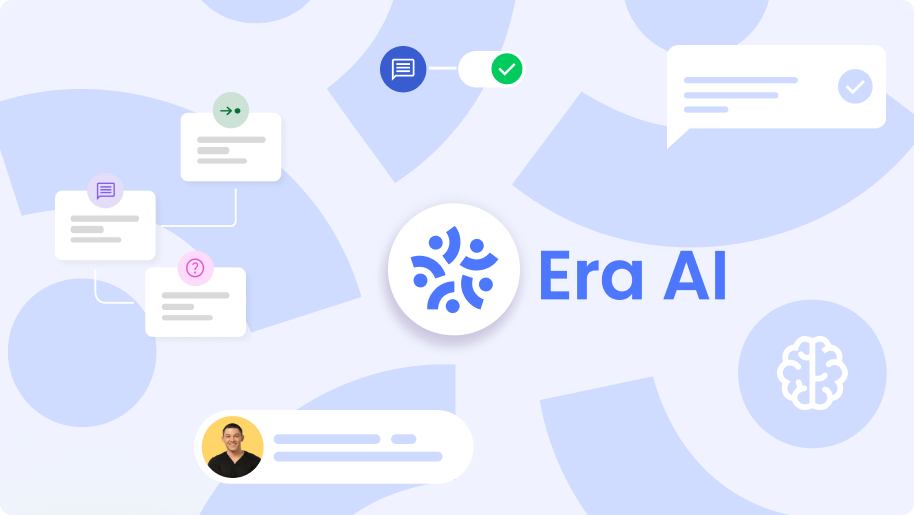Business Process Automation. Automation has become a massive focus for companies over the last years, and its adoption is growing exponentially. Automation saves time and money and improves both employee and customer experiences. Business process automation (BPA) can also eliminate human error and vastly improve the efficiency of operations. Put simply, it’s a no brainer.
However, every business process is a good fit for automation. Companies can achieve great ROIs and eliminate inefficiencies by choosing to automate the right processes. Conversely, automating the wrong processes can lead you down a road of endless tinkering that doesn’t deliver results.
Today we’re going to be looking at how you can get started on your automation journey. Let’s take a look.
What is Business Process Automation?
Business process automation (BPA) is when technology is used to automate business processes to increase efficiency and help achieve business goals. In this sense, processes are actions and activities that move your business forward towards its goals, however big or small those goals are. For example, one of your goals might be to respond to every email within one hour. With a simple automated email, you can achieve this goal.
While forms of BPA have existed for decades, it’s only in the last few years that the technology has become advanced enough to disrupt day to day business. Why? Because advancements in software and software become increasingly affordable, processes can be automated across the whole workplace with ease. The applications of BPA are widespread, touching every industry and even every department within a business.
BPA typically means:
- Automating processes.
- Centralizing information to increase transparency.
- Promoting the sharing of information while reducing the reliance on in-person communication.
BPA is also sometimes called workflow automation. BPA can consist of any one of the above or all of them.
BPA typically involves three fundamental things: business logic and rules, unstructured data, and structured data.
- Business rules and logic – These are the parameters of your data and the resources that define them. For example, do you capture data about your customer base’s demographics, and do you know how to manipulate this data to get meaningful insights? It can also mean document data and other business data.
- Structured data – This type of data is well organized and easily searchable. For example, names, dates of birth, and ZIP codes are good examples of structured data.,
- Unstructured data – This is data that is not actively managed in a database or transactional system. Examples of unstructured data include invoices, emails, sensor data, analytics, machine learning, geo-spatial data, and weather data.
When it comes to structured or unstructured data, one is not better than the other, and both can be extremely useful for driving actionable insights. However, there are unique challenges to handling unstructured data, and it also tends to be in greater abundance than structured data. Unstructured data is often a key area of focus for businesses looking to automate processes. Since there is often much more unstructured data than structured data within a business, it naturally means that some BPA projects will have to use unstructured data. It also means that companies have to become familiar with how to approach unstructured data.
The Challenges of Working with Unstructured Data
If your business is just starting out on your BPA journey, then you need to consider the following with regards to unstructured data:
- Where is your unstructured data stored? – Do you use object-based storage or file-based systems?
- How much unstructured data do you have? – The scale of unstructured data can be a significant hurdle for many businesses. Files can range from a few bytes to many terabytes in size. It would help if you had a robust understanding of the scale of your unstructured data before you even before you try to automate it.
- Collaboration concerns – Unstructured data is often shared between many teams and automating this data can be a nightmare when it comes to adding more structure, controlling access, and implementing governance.

The 4 Types of BPA You Need to Know
There are many different types of business process automation and even more examples of how each type is used in businesses every day. There are so many that we couldn’t begin to name them here. Instead, we’re going to focus on the four different types of BPA that are most common in businesses today.
Robotic Automation
Robotic automation involves using a machine learning bot to perform high-volume and repeatable tasks. For example, these bots can be used for data entry, form checking, and other similar tasks.
Database Automation
Database automation is any automation in the area of duplicated databases or carrying out time-intensive and repetitive database tasks. We live in an increasingly global world, where businesses often have offices in many locations. Thus, databases often have to be replicated many times for employees in different areas or different teams. Sometimes databases need to be duplicated for individual projects, both small and large. All of this can be incredibly time-consuming for Database Engineers (DBAs), whose time would be better spent doing tasks that need to be done manually and by a human.
Research into how much of a DBA’s job can be automated resulted in some surprising findings. At present, several aspects of the job are already automated most of the time. For example, “verifying that all instances are up” is automated 81% of the time. “Verifying that all scheduled jobs have run successfully” is automated 71% of the time. Other processes are automated less often but have the potential to be automated with the right BPA technology in place. For example, “cloning or provision databases for test and development” is only automated 24% of the time right now.
Server Automation
Like database management, server management can consume a lot of the IT administrator’s time when software can do the job just as well. With server automation software, you can quickly deploy new servers, apply patches, manage inventory, and more.
Team Specialized Automation
This type of automation involves specific software that helps particular departments or teams achieve their goals. The automation software might work very well in one department but be less useful elsewhere. For example, it’s common to see specific automation software in HR and marketing teams. Automation is huge in marketing, with marketing automation growing 30% each year in the US. At present, around 49% of companies are using marketing automation tools.

Here Are 5 Types of Business Process Automation to Get You Started
1. Customer Support
Despite our best efforts, sometimes things go wrong in the business, and customers notice. For example, maybe your website has gone down, or a particular page isn’t working as it should. When this happens, the company often receives an influx of tickets all about the same subject. It’s not a fair use of your support agents’ time to respond to each of these complaints individually. It’s time-consuming, and your customer service agents are better at dealing with more complex and human problems. Instead, you can automate your responses. You can use software to respond to all complaints that feature a keyword or a keyword phrase like “website not working” or “error message.”
This type of automation software can be a great way to ensure a flexible and resilient customer service operation. For your customer service team to be successful, they should never be overwhelmed. With customer service automation, your teams can carry on doing their job, and customers can still experience a high level of satisfaction because their concerns have been acknowledged.
2. Approval Management
Large organizations have compliance and governance structures where several employees have to sign off on something before it can go to the next step. Bottlenecks and delays are often common, and projects get slowed down to a snail’s pace. With BPA software, the approval system can be managed centrally and push employees to approve or respond with comments. It’s clear who has signed and who hasn’t signed, and it makes the process much more manageable. It also expedites moving onto the next step because the next stage starts immediately once all approvals have been met.
3. Going Paperless and Automating Data Capture
Employees often spend an excessive amount of time capturing customer data. This can also mean that more staff are needed to manage this data in other places, and productivity suffers. With BPA, you can use software to capture customer data and auto-fil specific fields easily.
The same is true for data capture for employees on the road. For example, let’s say you run a courier service. Drivers have to collect customer information when they deliver a parcel, and they also have to log their hours and breaks. This can be time-consuming and ultimately limit the number of parcels the driver can deliver in a day. If the driver has to spend 2 minutes every delivery filling in data fields, and an additional 20 minutes at the end of the day filling in their hours’ sheet, this all adds up to a lot of hours not actively delivering parcels. With automation software, the drive can just click a button when they go on break, and the hours are calculated immediately. With sophisticated back end software, customer information is already there by the time the driver gets to the address.
4. Reducing Errors
There’s plenty of business processes where errors can be catastrophic to achieving business goals. People make small errors every day, and these errors can have a big impact. Sometimes we’re tired. Sometimes our brains are bored of carrying out such a simple task that we almost act without thinking and miss something obvious. One of the key benefits of automation is that it eliminates human error. Bots don’t get tired or bored, and they don’t need breaks. They can work 24 hours a day and perform to a high level every time.
For complex systems or industries where compliance is extremely important, reducing errors is essential. For example, if you work with military, medical, or aviation data. However, even if errors don’t push you into non-compliance and open you up to fines, errors can still reduce efficiency and are worth eliminating.
5. Workflow Automation
Almost all businesses have workflow processes designed to promote efficient steps towards goals and ensure that tasks don’t slip through the net. For example, companies using spreadsheets to manage marketing approvals would be better off moving to a task-based approvals process where each stakeholder only sees what they need to approve. Spreadsheets are cumbersome and confusing, often leading to approvals being missed altogether.




















